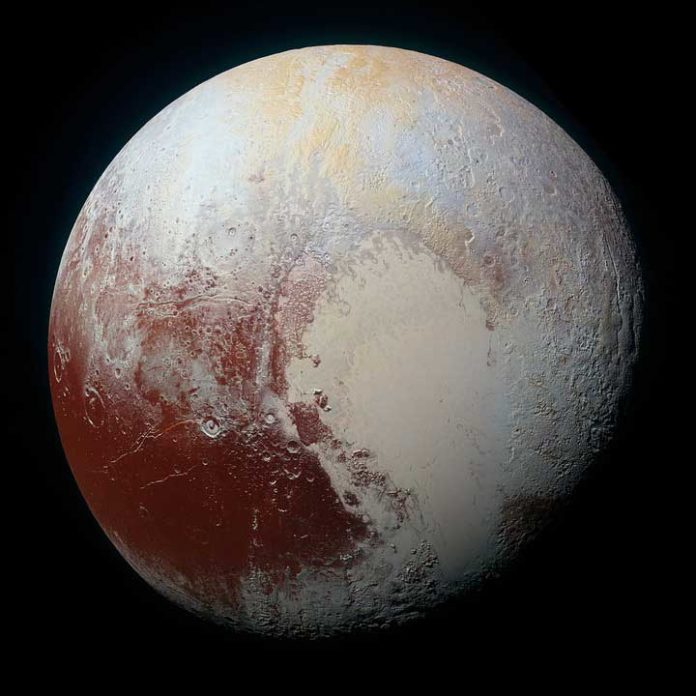Puto’s atmosphere contains tenuous layer of gases surrounding the planet. It consists mainly of nitrogen (N2), with minor amounts of methane (CH4) and carbon monoxide (CO), all of which are vaporized from their ices on Pluto’s surface. It contains layered haze, probably consisting of heavier compounds which form from these gases due to high-energy radiation.
It takes 248 Earth years for Pluto to complete one orbit around the Sun. Unlike earth, it has different weather patterns. Still, it experiences four seasons.
Now, a new study suggests that Pluto’s atmosphere may completely collapse and freeze by 2030 due to winter. Scientists suggest that the winter on Pluto is just a decade away, and once it begins the nitrogen-heavy atmosphere could collapse entirely and fall, turning into a layer of solid frost.
Every 248 years, Pluto completes another orbit around the sun. This long orbit and its great distance from the star means the surface temperature is between minus 378 and minus 396 degrees Fahrenheit.
A study recently shares data on Pluto’s atmosphere gathered between 1988 and 2016. Scientists used the data to model seasons on Pluto and how those react to the amount of sunlight it receives during different parts of its orbit. The researchers were able to record how surface pressure evolves during the seasons on Pluto. This helped paint a complete picture of the atmosphere, including density, pressure, and temperature.
Andrew Cole, study author, an associate professor at the University of Tasmania’s School of Natural Sciences said, “We found that when Pluto is farthest away from the Sun, and during its Winter in the Northern Hemisphere, nitrogen freezes out of the atmosphere. The atmospheric pressure has tripled over the past three decades, but as the planet orbits, our modeling showed that most of the atmosphere would condense out to almost nothing left. What are predictions show is that by 2030 the atmosphere is going to frost out and vanish around the whole planet.”
Scientists gathered this data when scientists observed ground-based stellar occultations when planets pass in front of background stars. This allows scientists to measure how much starlight is absorbed by a planet’s atmosphere.
Cole said, “These observations are tricky. The telescopes have to be positioned in the right spot to capture when a path outlined by the planet’s shadow also passes over a spot on Earth. This lasts only a minute or two.”
“If Pluto’s atmosphere collapses and freezes over, the dwarf planet may appear brighter in our sky because it will reflect more sunlight.”
“The striking red terrain seen in the New Horizons images could fade away if they are snowed under with nitrogen frost. This research has been crucial in furthering our understanding of Pluto and testing what we know about atmospheres, ices, and climate at extreme conditions.”
